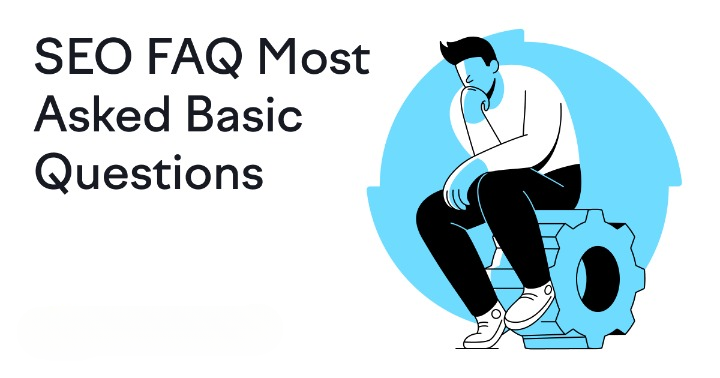SEO
Why is SEO-friendly web design crucial?
- When a business launches a new website or rebrands to a new domain name, its SEO progress frequently vanishes over night because they neglected to set up 301 redirects. A 301 redirect informs search engines of a page’s new location.
- Your website’s design may be impacted by SEO: You’ll frequently discover that these aspects directly affect how you design your site when you take into account SEO best practices that are relevant to web design, such as page speed optimization and site architecture. You’ll have trouble ranking where you want if you ignore SEO.

1. Code
When choosing the code to render the key design components of your site, designers have a few possibilities. For good reason, the majority continue to use HTML and CSS. Flash websites may be visually appealing, but they are quite challenging to optimize, which makes it tough for them to get high search engine rankings. Your SEO will appreciate you for advising your designer to avoid using Flash.2. Mobile-friendliness
Your website must be available to all mobile users who are using smartphones and other mobile devices to explore the Internet. As mobile friendliness is now a ranking criterion for Google, this will not only improve user experience but also increase your chances of ranking highly. Responsive design, which makes your site accessible on all devices and browsers, is the greatest solution to this problem. Additionally, if you have a separate mobile site, you run the risk of having redundant material, which is avoided with responsive design.3. Readability
While the non-text components of your site may be the designers’ primary focus, it’s crucial that they select fonts and sizes that are simple for your visitors to read. Your designer should be aware to provide enough of space for content unless the body copy is being taken from an existing site (or has been pre-written) and is part of your design specifications. To rank highly, you’ll need to have a ton of relevant, optimized content, and your SEO will suffer if your design only works with a few words of text.Images
You might believe that the only aspect of your website that can be optimized is the copy, but this is untrue. When adding photos to your website, your designers should keep a few best practices in mind as well.4. File names and size
All of your photographs need to have meaningful file names. This will assist search engines in “seeing” your photographs and placing them inside context, even though it might take a bit more effort than simply giving them names like “IMG 0035.jpg.” Large, high-quality photos are undoubtedly pleasing to the eye, but your designer should make an effort to keep file sizes as little as possible. Large files can increase the time it takes for a website to load, which not only makes for a bad user experience but also raises your bounce rate—damaging your rankings.5. Alt tags
Your photos ought to have optimized alt tags along with their file names. Users may read these descriptions when they hover their mouse pointer over an image, which helps search engines understand what is being depicted. Alt tags are crucial for accessibility since they assist users who are blind or have browsers that cannot view your files in understanding what is being displayed.Site architecture
Depending on how involved you (or your SEO) are in the process, your designer’s influence over your site architecture will vary, but it has a significant impact on how well your site ranks. Here are some things to remember:6. Navigation
You should keep navigation simple because it’s one of the key elements of a fantastic user experience. The more quickly users can locate what they need on your website, the more probable it is that they will convert. A user-friendly navigation system also reduces the likelihood that visitors will become lost on your website and depart, which can lower your bounce rate and boost your rankings.7. URL structure
Every one of your pages has to have a URL that accurately conveys the information it contains. You can add a few pertinent keywords and should use hyphens, NOT underscores, to separate your words. It would be easier for site visitors to remember and search engines to understand your sites if your URLs contain descriptive words rather than just random numbers and letters.FAQs about web design and SEO
Many website owners wonder which is more crucial and believe that good design can overcome poor SEO, or vice versa. But neither is the correct response. Simply put, beautiful design keeps visitors on your site while effective SEO attracts them. Beautiful websites are meaningless if no one visits them, and top search engine results are useless if your website’s design drives away users (which, in turn, will hurt your rankings).
You need to make sure that site design and SEO complement one another because they are so tightly intertwined. For this reason, it is imperative to steer clear of the all-too-common practice of hiring a designer to layout and build a website before adding an SEO as an afterthought. Early on in your project, you should incorporate a designer and an SEO expert. This will enable your SEO to understand the intricate details of your site design and will assist the designer in developing an SEO-friendly site architecture. Hiring a single person who specializes in both web design and SEO may seem like the ideal approach to guarantee that your design and optimization work well together, but if that’s what you’re thinking of doing, proceed with extreme caution. These are two different fields, and it is preferable to recruit two people who excel in each rather than one who is only average at both. Hiring a full-service Internet marketing company is a superior solution. Allowing a seasoned group of designers, developers, and SEOs to collaborate on your site will ensure that not only will the results be cohesive, but that each task was completed by a qualified expert.
Although the connection between web design and SEO is complicated, we hope that this page has at least somewhat clarified it. Liyanitsolution can assist you if you have any concerns about how well your site combines the two or if you are thinking about starting a design or redevelopment project. The talented group of designers, developers, and SEOs at our SEO web design firm would be delighted to help you create a site that is both useful and aesthetically pleasing. Over the previous five years, we’ve created more than 1,128 sites and assisted our clients in generating over $3 billion in revenue! Learn more about our SEO programs and website design services by getting in touch with us online or by calling +91-8955152719


